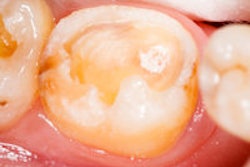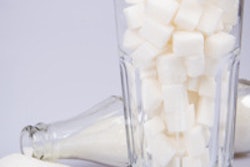BOSTON - In a poster presented on Thursday at the International Association for Dental Research (IADR) 2015 General Session, researchers from the University of California, San Francisco described their work on improving bond strength in composite restorations.
The researchers used riboflavin activated with ultraviolet A (UVA) light to cross-link dentinal collagen for both "sound" and caries-affected dentin when total-etch adhesives are used. This UVA-based cross-linking method may be applied to composite restorations to improve bond strength, they wrote in their study abstract.
For the study, they allocated 60 sound molars and 60 caries-affected ones to one of three groups: control, riboflavin, and riboflavin/UVA. The dentin in the riboflavin group was treated with one drop of 0.1% riboflavin-5-phoshate every minute for four minutes. The riboflavin/UVA group was treated with riboflavin for one minute, gently air-dried until visibly moist, and exposed to UVA light for three minutes while applying a new drop of riboflavin each minute.
After each treatment, two different adhesives (total-etch and self-etch) were applied, and composite stubs (5-mm height/19.6-mm2 area) were built up on the treated surfaces. They were then debonded in tension with a universal testing machine to measure bond strength.
The UVA treatment group yielded significantly higher bond strengths for both sound and carious dentin when the total-etch adhesive was applied, the researchers found. The group treated solely with riboflavin did not show a significant difference when compared with the other groups.
For the self-etch adhesive, there was no statistical difference between the three groups for both sound and carious dentin; however, the carious group generally performed better than the sound group. Also, the treatments (riboflavin and riboflavin/UVA) did not affect the carious group.



















